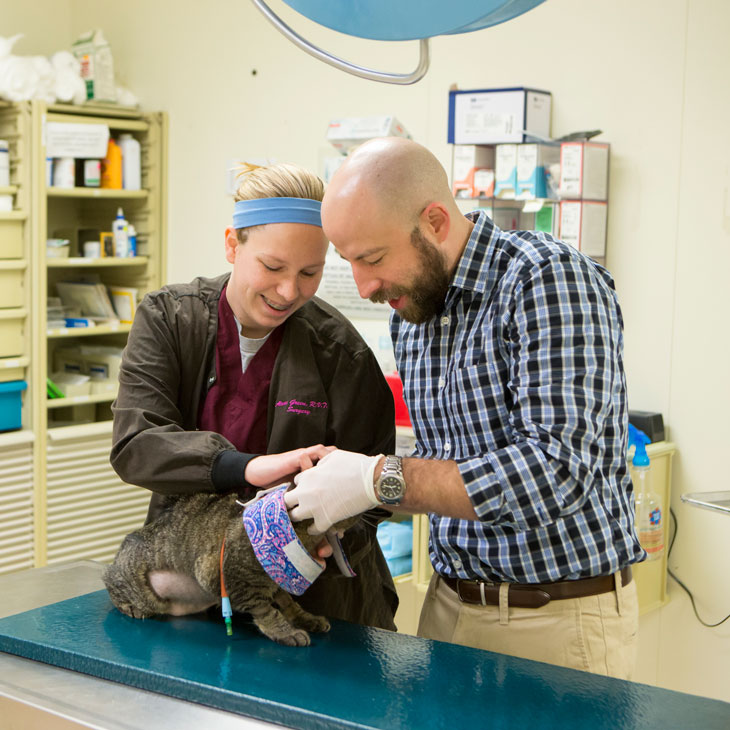
National Veterinary Technician Week
Monday, October 8, 2018
The definition of a veterinary technician is one who assists the veterinarian; however, the role they play in preserving animal health and welfare is so much more.
Since 1993, the third week of October has been designated as National Veterinary Technician Week as an opportunity to publicly recognize the many contributions of veterinary technicians everywhere.
Veterinary technicians must graduate from a veterinary technology program. The program must be accredited or approved by the American Veterinary Medical Association’s Committee on Veterinary Technician Education and Activities. Program approval can also be given by an accrediting agency approved by the Board or a person who has received equivalent training as set forth in the rules of the Board.
The veterinary technician is equivalent to the registered nurse in human medicine.
At Oklahoma State University’s Veterinary Medical Hospital, there are 41 veterinary technicians and four veterinary technicians with veterinary technician specialty status.
Unlike a privately owned veterinary practice, where the veterinarian is like a family doctor, OSU’s Hospital has many different areas of specialty. As in human medicine, each specialty has its own team of doctors and technicians.
These professionals have many responsibilities above what you would find in a general veterinary practice. They are trained in that discipline and possess specialized skills as well.
For example, some enhanced skills seen in anesthesia would be technicians placing arterial catheters for advanced monitoring and local and invasive nerve blocks to assist with pain control.
Critical care technicians place central lines in patients for extended IV access and are charged with several critical care patients. It is the technician’s responsibility to constantly monitor critically ill patients and administer pain control as needed.
Internal medicine technicians give chemotherapy drugs, which also requires special training.
These are just a few of the advanced skills OSU’s Veterinary Medical Hospital technicians need in each area to enhance patient care exponentially.
Many of the same specialties available to veterinarians are also available for technicians. For technicians, this is a two-year process that involves extensive preparation and dedication and is much more in-depth for that area than general knowledge would require.
Four veterinary technicians at OSU’s Veterinary Medical Hospital have pursued this extra credentialing process in the areas of anesthesia/analgesia, emergency/critical care, and ophthalmology.
The next time you take your pets or livestock to your veterinarian, take a moment to thank the veterinary technicians who offer their expertise and compassion when caring for your animals.
by Suzanne McKenzie, RVT, VTS (anesthesia/analgesia)
